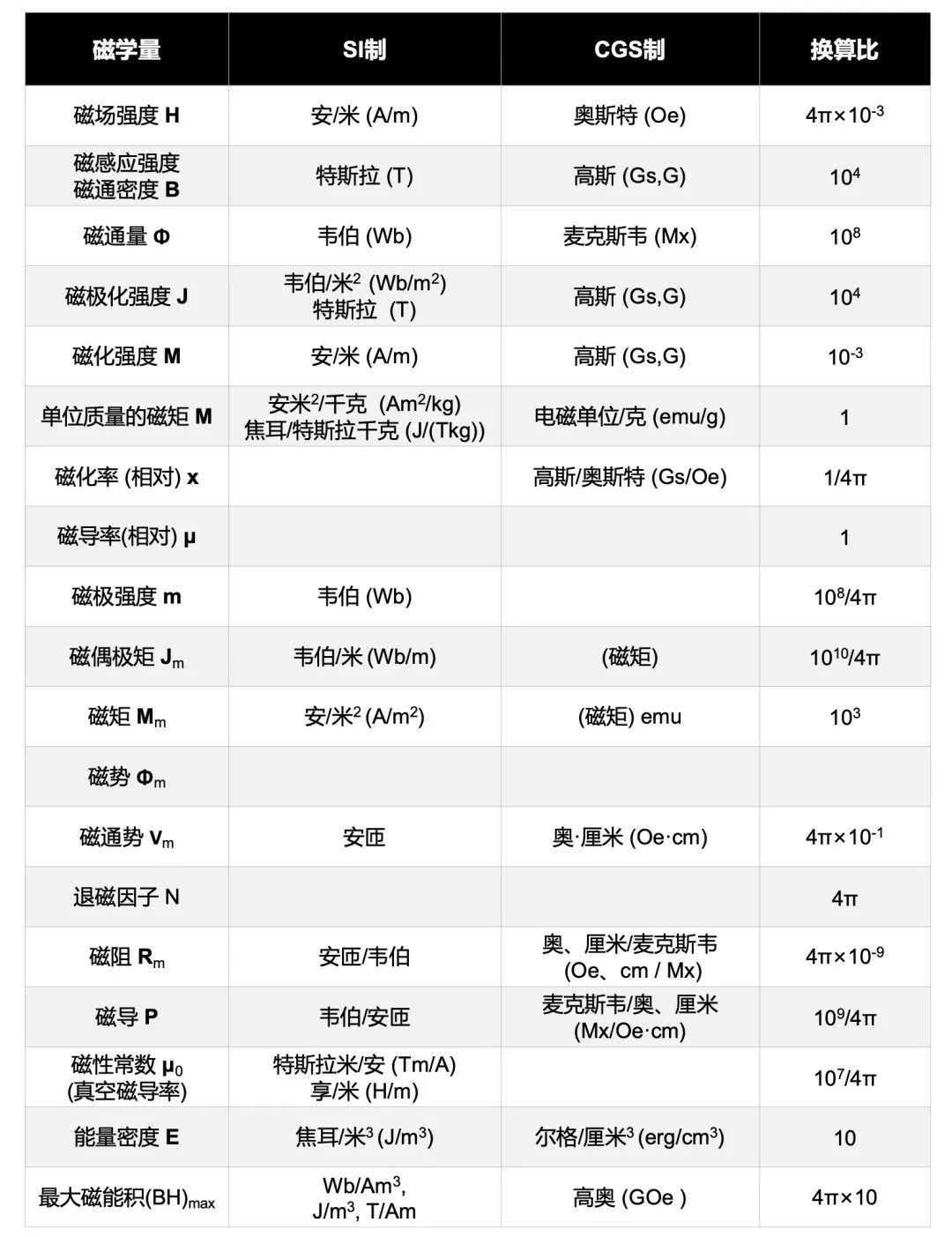The Conversion Relationship between the SI System and CGS System of Magnetic Units
In the field of electromagnetics, in addition to widely adopting the International System of Units (SI), CGS Gaussian units are also commonly used, especially in research and applications related to magnetic materials, where the conversion requirements between the two unit systems are quite common. However, the conversion calculation process between SI system and CGS system is quite complex, which has brought many inconveniences to many practitioners. In view of this, we have carefully sorted out and summarized the conversion relationships between various units and different unit systems in electromagnetics, aiming to provide a practical reference material for relevant personnel to quickly consult and solve the problem of unit conversion when needed.
Overview of the International System of Units (SI) and Gaussian System (CGS)
In the International System of Units, electromagnetism uses the MKSA rational system. This unit system specifies the units of four fundamental physical quantities in the field of electromagnetics, namely: length in meters (m), mass in kilograms (kg), time in seconds (s), and current intensity in amperes (A). The establishment of this unit system has laid a solid foundation for the quantitative research and application of electromagnetics, enabling the measurement and calculation of relevant physical quantities to maintain consistency and accuracy on a global scale. The Gaussian unit system was developed based on the absolute electrostatic unit system (CGSE unit system, also known as e.s.u) and the absolute electromagnetic unit system (CGSM unit system, also known as e.m.u) in electromagnetism. Essentially, the Gaussian unit system is an electromagnetic unit system formed by synthesizing and summarizing the above two unit systems, and is therefore also known as the mixed unit system. In the absolute electrostatic unit system, length, mass, and time are selected as the basic quantities, corresponding to units of centimeters (cm), grams (g), and seconds (s), respectively. This unit system is mainly suitable for research and calculations related to electrostatics.
Detailed explanation of the conversion relationship between the 02 SI system and CGS system
If you need to convert the values in the SI system to the values in the CGS system, you can calculate according to the conversion ratios listed in the table below. Due to the complex physical principles and mathematical derivations involved in the conversion relationship between SI system and CGS system, the process is quite cumbersome, so it will not be elaborated in detail here. For readers who are interested in the principles of unit system conversion and wish to gain a deeper understanding of its internal logic and derivation process, we recommend reading the book "Electromagnetic Unit System" (edited by Hu Youqiu). This book explains many key issues of electromagnetic unit system in a simple and profound way, which can help readers better grasp the essence of unit system conversion and thus be more proficient in unit conversion in practical applications.
Magnetic Parameter Unit Conversion Table (Conversion Relationship between SI and CGS Systems)





